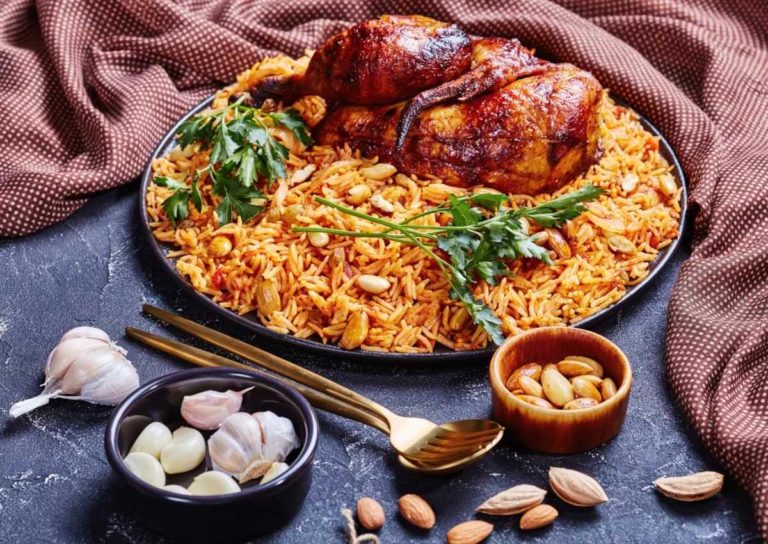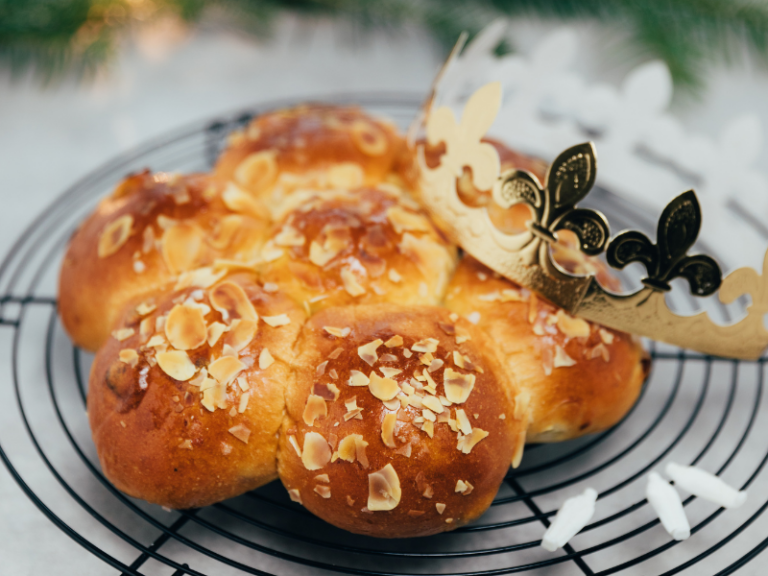Bolivian Food: 15 Traditional Dishes of Bolivia
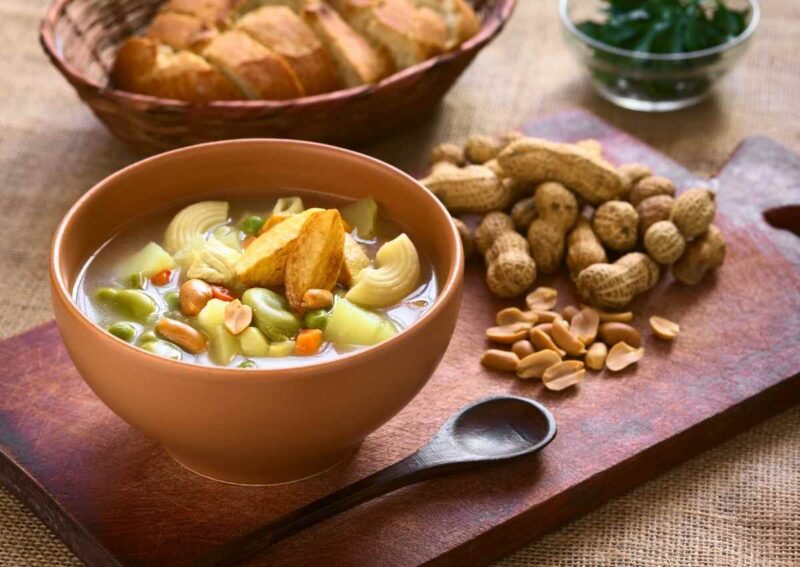
Bolivia is a landlocked country in the heart of South America, bordering Brazil, Peru, Chile and Paraguay. Boasting outstanding geographical diversity, its area spans from the Andean mountains to the Amazonian rainforests, which is easily twice the size of Spain.
The culture of Bolivia is heavily influenced by the indigenous Quechua people and the Aymara people, as well as other Latin American countries. This culture is clearly reflected in its architecture, music and of course, the food.
Bolivian cuisine is versatile and emblematic of the influences from the Spanish (of whom Bolivia was a former colony), the French and other cultures.
Staples of Bolivian cuisine include beans, potatoes, corn and quinoa. Rice, pork and chicken were introduced to Bolivia by the Spanish. Common dishes throughout the country also diversifies in accordance to the climate.
To elaborate, the highlands of Altiplano have a cold climate and they use more spices in this region in contrast to the lowlands of the Amazon, where fish, vegetables, fruits and yuca are used in abundance given the tropical climate. Bolivia is among the largest producers of quinoa in the world, which has a reputation of being a superfood.
Salteñas (Bolivian Empanada)

A popular Bolivian breakfast, slateñas are pastries filled with vegetables such as potatoes, olives, peas, carrots and meat (chicken or beef), and drowned in spicy sweet gravy. This sets the Bolivian empanadas apart from a traditional South American ones.
An Argentinian woman from Salta, who is said to have moved to Bolivia, baked the most delicious empanadas and women would send their kids to “go pick empanadas from Salteñas”. Translated to English Salteñas means a woman from Salta.
Majadito
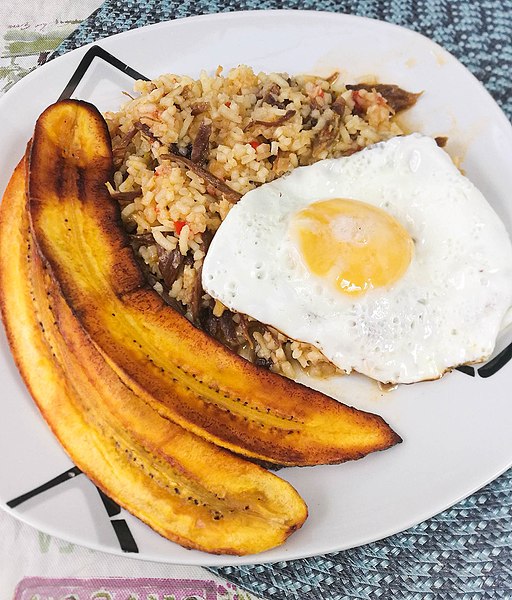
A dish of the eastern part of Bolivia, Santa Cruz, where the cuisine is influenced by the tropical climate (a noticeable contrast from the rugged Andean fare), Majadito consists of toasted rice accompanied by fried egg, beef jerky, garlic, peppers, onions and tomatoes. To complete the tropical flavor, a fried banana is also served as a side dish.
Sandwich de Chola
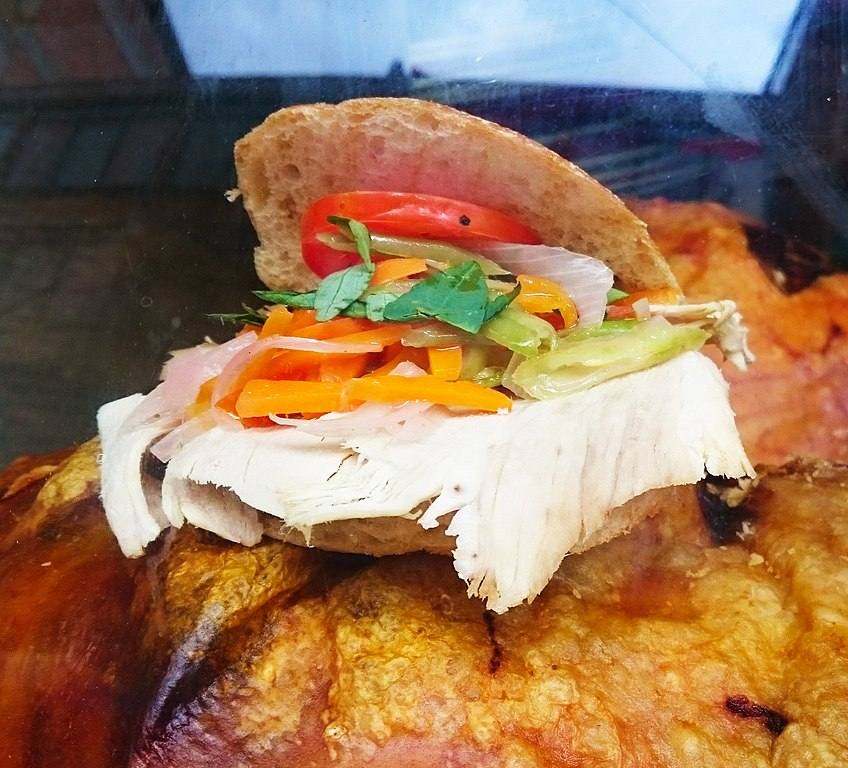
The name chola comes from the word cholita – a name that the indigenous women who serve it are affectionately called. A quintessential street food of the capital La Paz, it is a sandwich made of round bread with slices of roasted or baked crispy pork, pickled onions, carrots, slices of lettuce and tomato, seasoned with spices and quirquiña (a herb).
Pique Macho (Dish for the Man)
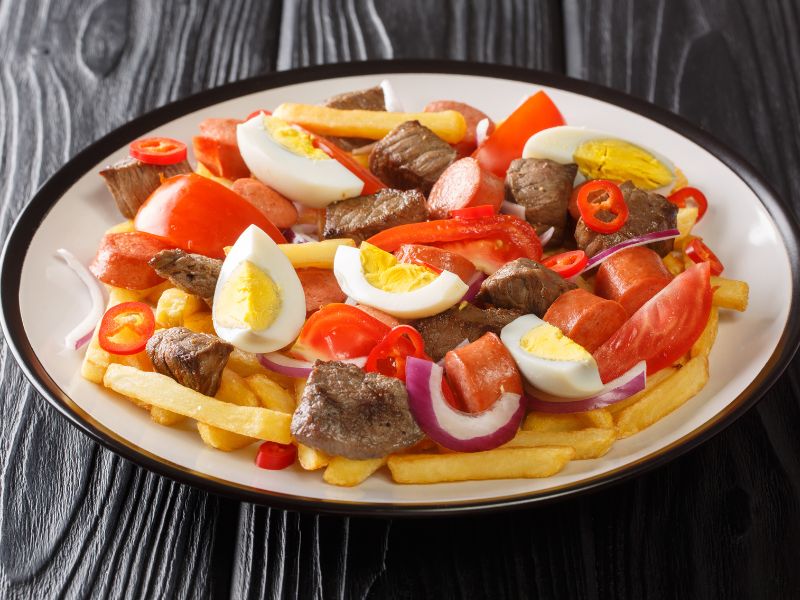
Pique macho is a gargantuan plate of food typical to Cochabamba (the valley region). It is a messy mix of heaps of well-seasoned minced or strips of beef, sausage or hot dogs, tomatoes, onion, french fries, chorizo, locotos (chilli pepper) and boiled eggs in more than generous quantities.
It is served with ketchup, mayonnaise or mustard, or sometimes with a sauce made with llajua (a spicy Bolivian salsa), beer, oil and vinegar.
According to the belief behind its origin, a group of drunk workers were said to have demanded the owner of a restaurant serve them anything they could eat late one night. Given the fact the restaurant was closing, the woman put together any ingredients she could find on a pan and made it extra spicy to sober them up.
She dared them to finish it if they were “man enough”. Finishing the plate is therefore seen as a sign of masculinity.
Silpancho
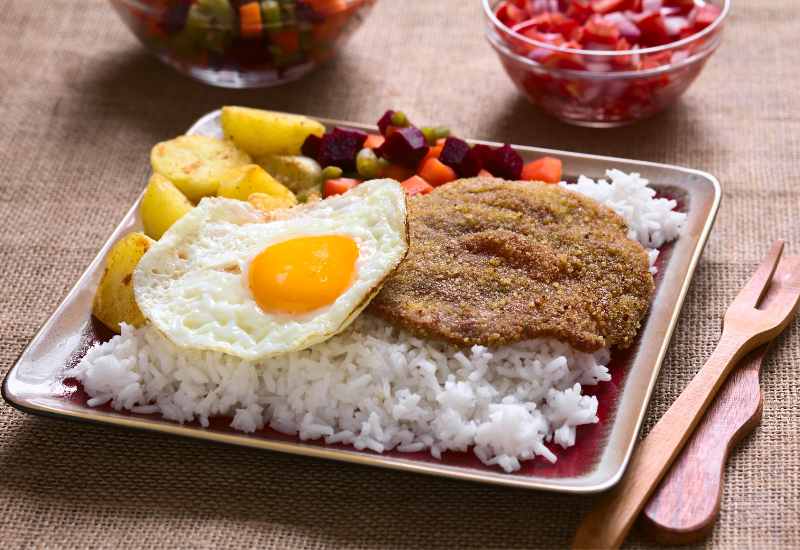
Another unique dish from Cochabamba, Silpancho is a generous plate of food consisting of layers of plain white rice, boiled potatoes, very thinly pounded beef and chopped and diced tomatoes, along with onion, parsley and beets and a fried egg.
Silpancho is a Quechua word that means thin and ponded, referring to how the beef in the dish is served. This is a dish for more than one to share.
Anticucho
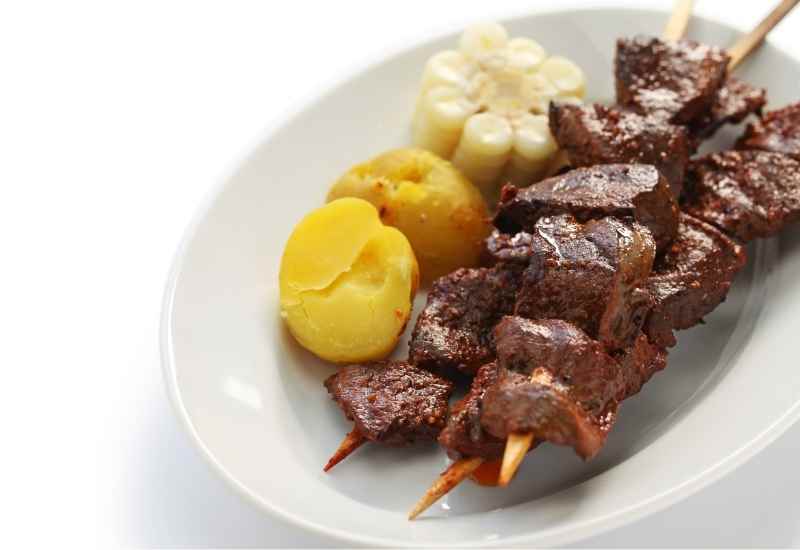
Though the true origins of this dish lies in the Andes, anticuchos are very popular in parts of Bolivia. Bolivians typically make them with chicken, beef or cow heart. The meat is skewered on sticks and grilled after marination.
The marinate for this delicacy is packed with flavor, consisting of garlic, vinegar and spices such as black pepper, cumin, salt, mint, parsley and oregano. The sides include roast potatoes smothered with spicy chilli and peanut sauce.
Sopa de Mani
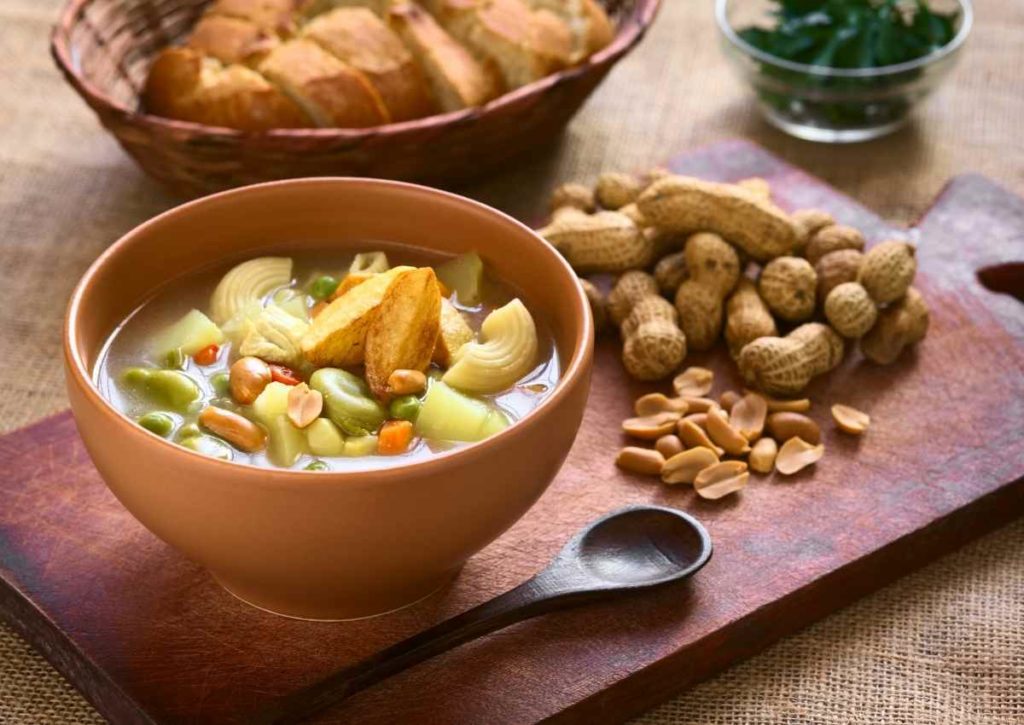
The literal translation of sopa de mani is ‘peanut soup’. It is typically prepared with chicken or beef ribs, however it is also served without meat in some places.
The soup is cooked with a variety of vegetables combined with macaroni and peanut, and is garnished with fresh aromatic herbs and french fries. Its perfect companions are crusty bread and llajua. The simplicity of the soup makes it a hearty Bolivian lunch.
Fricase
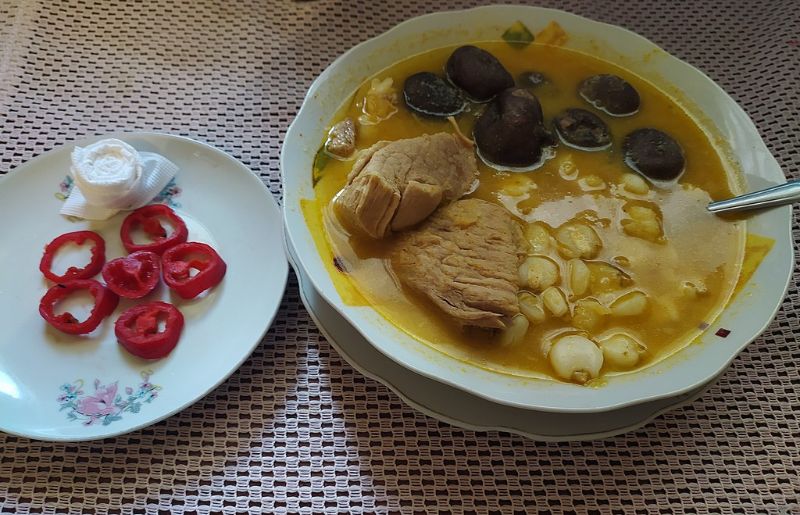
A popular food of the highlands, fricase is a stew prepared with spicy chicken or pork. The dish was adapted from the original French version and made their very own by fusing other ingredients such as hominy, salt, black pepper, red yellow chilli, onion, garlic and choclo.
The consistency of the broth is thickened by adding breadcrumbs. The soup is popular for alleviating the symptoms of a hangover.
Helado de Canela
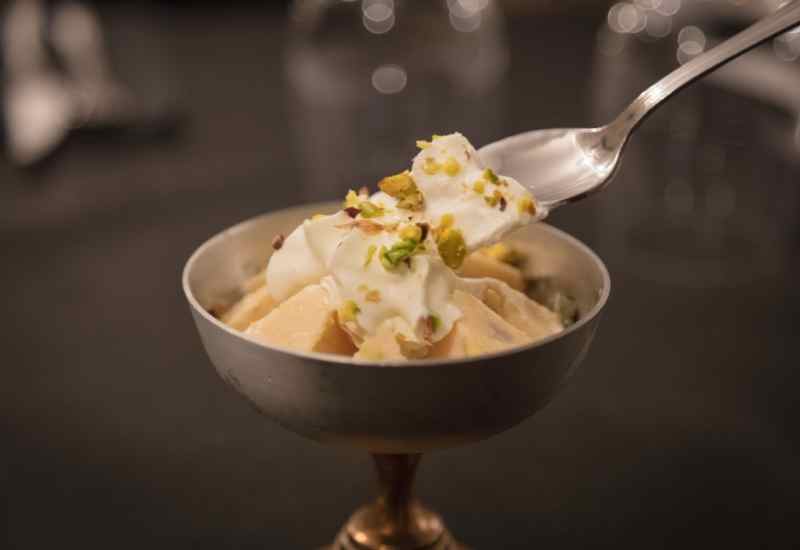
This dessert is a special treat for people who don’t eat dairy. Helado de canela is cinnamon ice cream prepared without milk. It is water-based and is flavoured with cinnamon, cornstarch and lemon juice.
Traditionally, it is produced by beating the base preparation in mara wood kegs with lots of ice and salt. A refreshing treat, it is a great way for Bolivians to beat the heat on a long summers day.
Papitas
Papitas are a delicacy consisting of quinoa stuffed with tuna. To make papitas, quinoa grains are cooked until soft. It’s then combined with bread which has been soaked in milk and eggs. They are mixed into a paste and formed into balls. The balls are stuffed with a tuna mixture, flattened slightly and fried.
Mocochinchi

Monochinchi means dried peach in Quechua and is one of the most favorite drinks throughout Bolivia. It is essentially a cider made from dehydrated peaches, water, orange juice, lemon zest, black raisins, sugar and cinnamon. It is typically drunk in a large glass jar and is sold by the street vendors in many parts of the country.
Cuy (Guinea Pig)
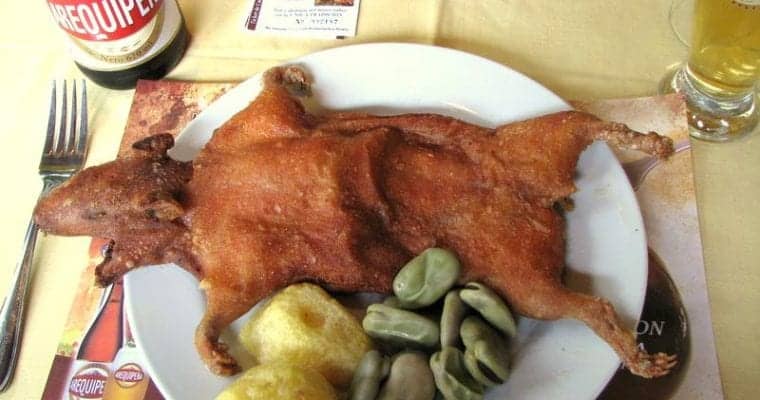
Cuy is a popular dish eaten throughout many South American countries, consisting of guinea pig that is either fried or baked.
Cuy al horno (sometimes also called Cuy al palo or Picante de cuy) is baked or spit-roasted, whereas Cuy Chactado is fried in spices.
Picante de Pollo

Picante de Pollo is a Creole dish originating in Western Bolivia consisting of chicken, sautéed or fried, doused in a traditional spicy sauce that is thickened with potatoes. It is known for its spicy aroma and flavor, and is a popular food to eat on long winter nights.
It is often served alongside a bed of rice and potatoes, and spice can be easily adjusted according to preference.
Guarapo (Sugarcane Juice)
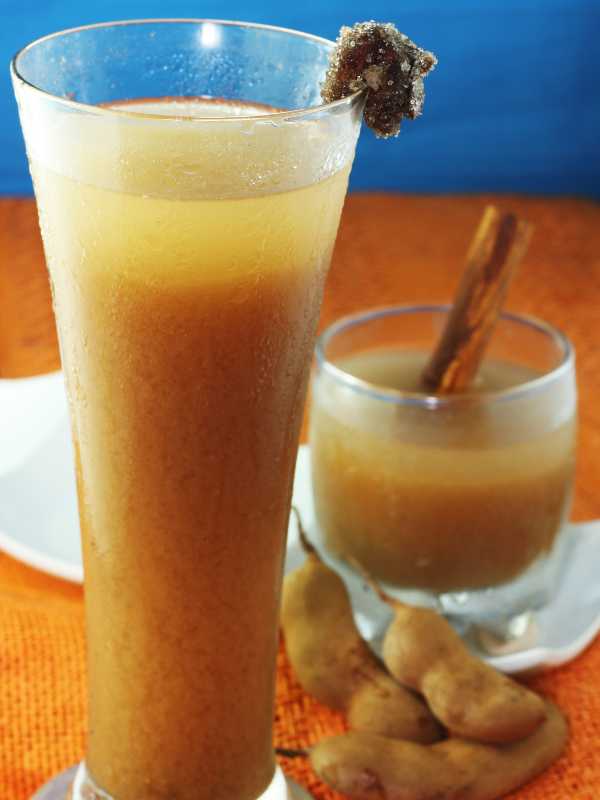
Guarapo is a traditional drink made from sugarcane juice enjoyed throughout Latin America. To make guarapo, fresh sugarcane stalks are crushed to extract the juice. The juice is then served as a natural, sweet and thirst-quenching drink. In some variations, guarapo is mixed with lime juice or served over ice for added flavor and coolness.
Revolcado
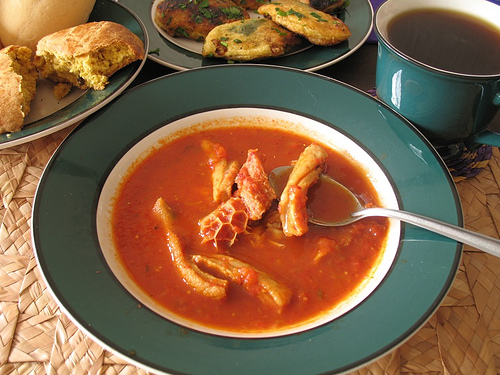
Revolcado is a stew made using pork offal cuts, fresh tomatoes, vegetables, herbs and spices like chilli peppers and annatto. The pork is cooked first while the chillies and tomatoes are blended together into a sauce.
The sauce is then added to the meat before cooking them together. It is usually served with rice or tortillas. Revolcado originated in Guatemala but is also now popular in Peru, Colombia and Bolivia.
Chuflay
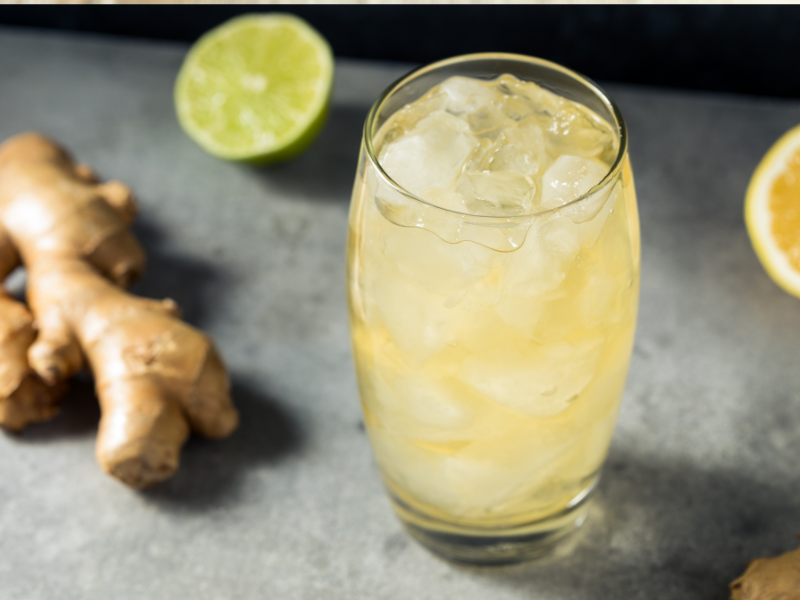
Chuflay is a traditional brandy-based cocktail enjoyed throughout Bolivia. The drink uses Singani (a Bolivian brandy) with ginger ale and a slice of lemon or lime.
The drink is easy to make and considered to be refreshing, making it a popular drink to enjoy at celebrations and social gatherings.

